DJI Mavic Air 2 review: excellent aerial 4K footage and photos
The Mavic Air 2 is a great-value drone, offering high quality videography and pin-sharp stills


DJI’s Mavic Air 2 lets you capture ravishingly sharp and detailed aerial photographs. It’s also suitably excellent for shooting 4K video at speeds up to 60 frames per second. A host of automotive functions and clever in-flight features take this drone's photography and video to the next level.
-
+
Stunning 48MP photos
-
+
4K video at 60fps
-
+
New smart photo features
-
+
Improved hand controller
-
+
Great price
-
-
Bigger and heavier than the Mavic Air
-
-
Not as good as the Air 2S
Why you can trust T3

DJI’s Mavic Air 2 (launched April 2020) is quite a different bird to the one we were expecting. In fact, in terms of size and to some degree weight, it’s actually closer to the Mavic 2 Pro and DJI Mavic 2 Zoom than it is to the original Mavic Air. Whether these increased measurement statistics will entice current Mavic Air owners to upgrade is a moot point. But what isn’t in doubt is the plethora of extra advanced features this new drone brings to the table, along with a new vastly-improved camera and a completely redesigned hand controller.
We’ve been out in the field the last few days putting the Mavic Air 2 through its paces (honestly, officer, it’s work) and, as predicted, it did everything we expected of it and a lot more besides, earning it a solid place in our best camera drone ranking. Read on for our full DJI Mavic Air 2 review.
Note: in April 2021, DJI released a new version of this drone. Find out what we thought in our DJI Air 2S review, or see how it compares to this model in our DJI Air 2S vs DJI Mavic Air 2 faceoff, or for a three-way battle between two of this drone's closest competitors, head to our Autel Evo Nano vs DJI Mini 2 vs DJI Mavic Air 2 comparison.
- Too pricey? Try one of the best budget drones
- Looking for a toy option? Here are the best drones for kids
- Autel Evo Nano drone review: this sensational mini drone is coming for DJI's crown
DJI Mavic Air 2 review: design
Let’s cut straight to the chase. The new Air 2 weighs 570g against the current model’s 430g. That’s an understandable weight gain given the extra features and the new larger camera. What isn’t so understandable is the dimensions and body design. Given that one of the main selling factors of the Mavic Air was its compact size (somewhere between the Mavic 2 Pro and Mavic Mini) and cute rounded body, it seems like an odd decision to follow it up with a less aesthetically pleasing model that is closer in dimensions (180×97×84 mm) to the Mavic 2 Pro/Zoom (214x91x84 mm) than it is to the current Mavic Air (168x83x49mm). In fact, it’s now almost impossible to distinguish between the two product lines using sight alone.
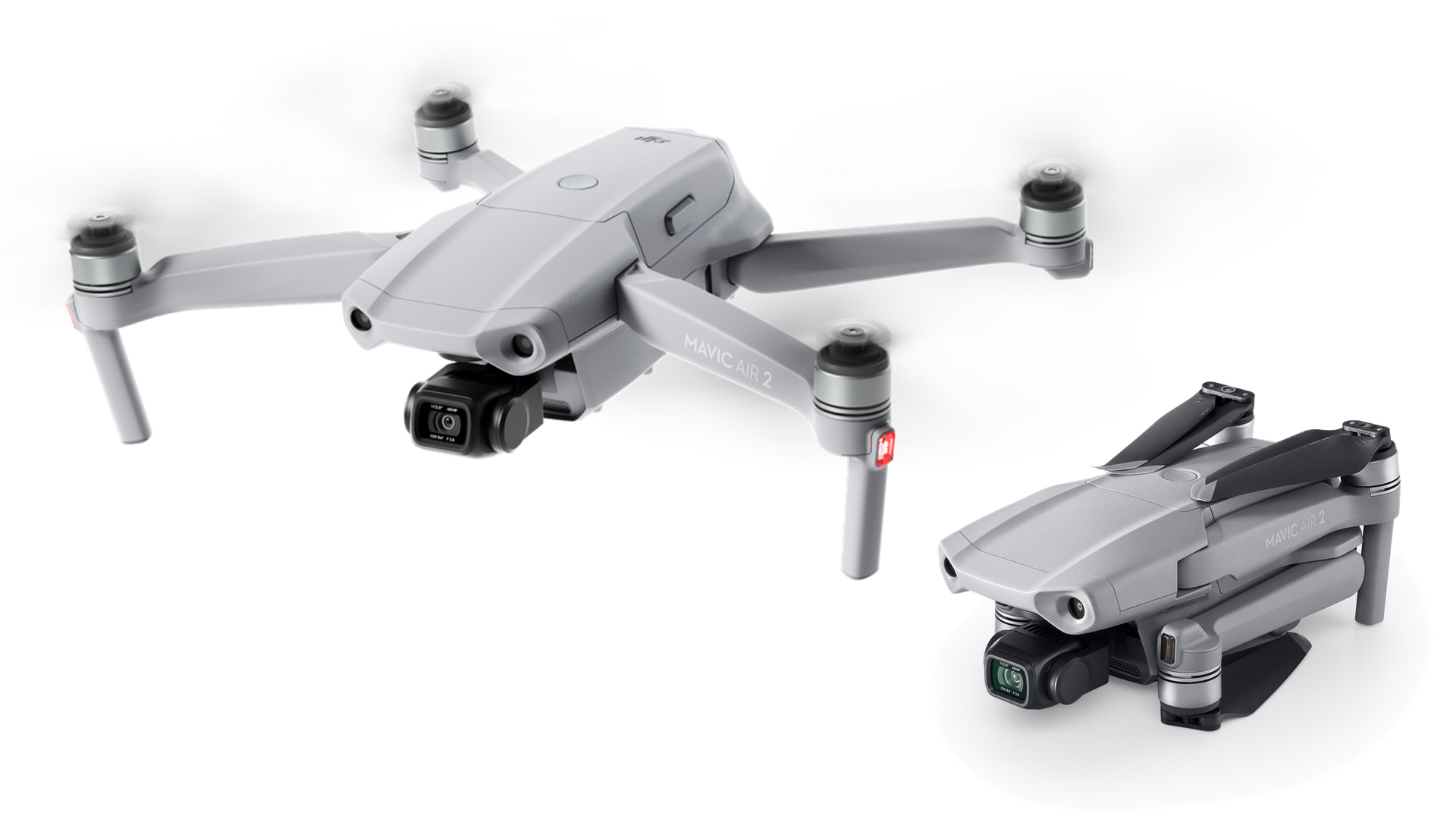
The new DJI Mavic Air 2, unfolded and folded
DJI Mavic Air 2 review: flight performance
We were never going to be disappointed by how well the Mavic Air 2 flies. And sure enough it’s impeccable in every respect – very confidence inspiring and steady as a rock, even in a stiff breeze. It’s also one of the quietest DJI drones I've (n)ever heard – a pleasant low silky tone that almost disappears when the drone reaches about 10 metres in altitude.
If flight time is an important factor for you, then this one sets the DJI record of 34 minutes on a single 90-minute charge. That’s a substantial 13 minutes longer than the current Air. However, unlike the much smaller Mavic Mini, the battery can’t be charged via USB so if you’re planning on shooting in the wilderness for a few days with no access to electricity, buy some extra batteries or a car charger when available.
The Mavic Air 2 sports three different top speeds: in Sport mode, it now reaches an impressively nippy 42.5mph (68kph); Normal mode is 27mph (43kph); and Tripod mode for slow gentle control when videoing is 11mph (18kph).
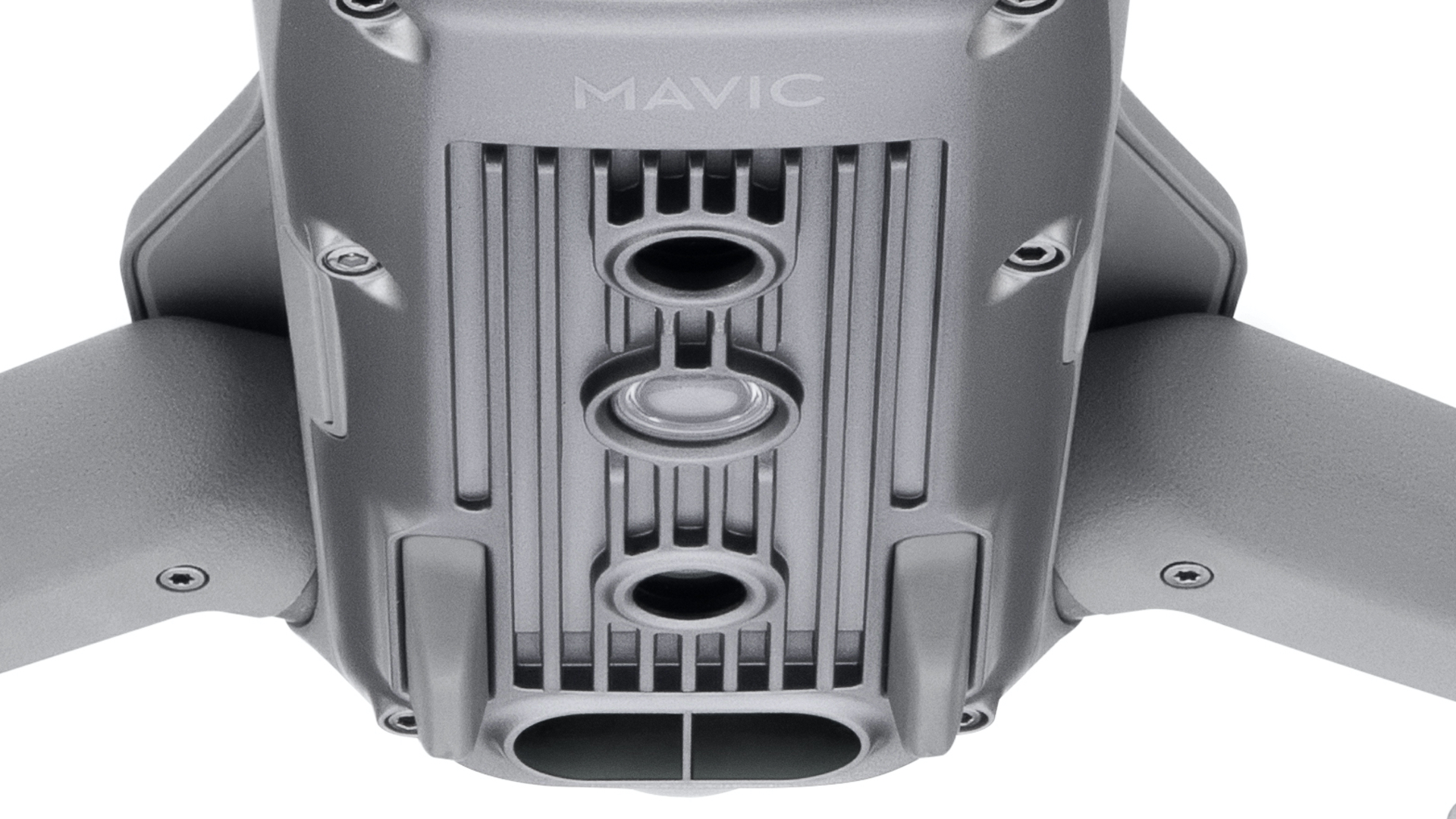
The Mavic Air 2 has obstacle sensors fore, aft and below
DJI Mavic Air 2 review: in-flight features
Although it’s illegal to fly beyond line of sight, in the correct conditions it’s possible to fly this baby up to 10km away while still receiving the video feed via its dual-band Occusync 2.0 transmission technology. Absolute maximum flight distance is now a frankly incredible 18.5 kilometres but you will have lost video signal long before then.
The Mavic Air 2 boasts forward, backward and downward obstacle sensors making it nigh on impossible to crash. It’s also been fitted with a dazzling white auxiliary light under its body which makes the drone more visible at height and provides ample glow for landing in low light conditions. The Mavic Air 2 comes with a handy 8GB of internal storage along with the obligatory Micro SD card slot.
The drone’s Advanced Pilot Assistance System (APAS) has also been given an overhaul, enabling the Air 2 to automatically negotiate its way around obstacles in a more accurate and smoother manner than any other DJI consumer drone.
The last major new feature will only be in available to American fliers while the world is in lockdown, but it’s something any consumer drone pilot will be greatly reassured to have on board. AirSense is a technology that warns drone operators about aircraft in the area (you know, big planes and helicopters). It receives ADS-B signals from all aircraft and displays their whereabouts on the controller’s screen. This is a major innovation that will doubtless prevent near misses and other heart-stopping moments.
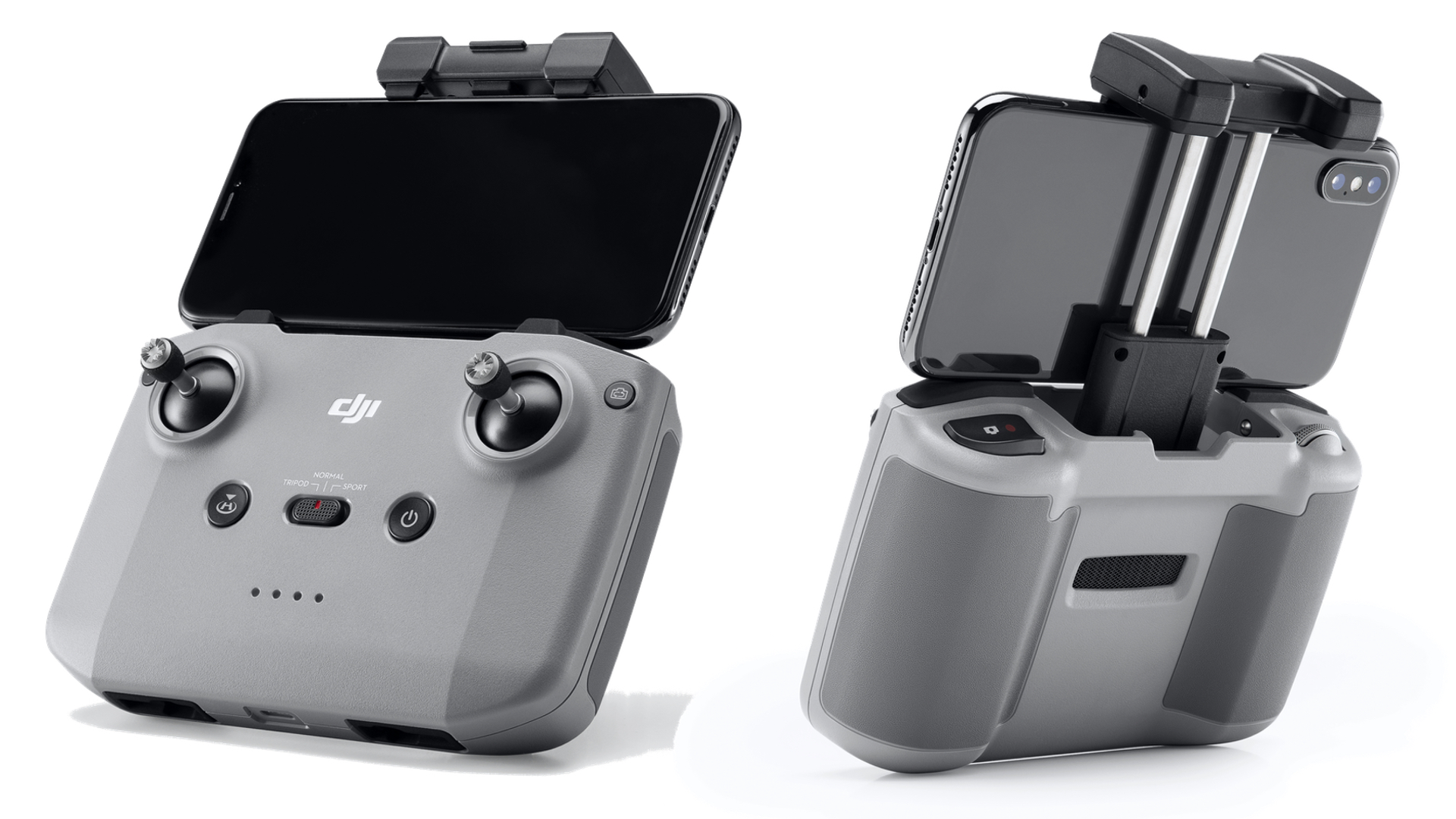
The Air 2's new hand controller is simply perfect. A cable (missing in this image) tethers the controller to the phone
DJI Mavic Air 2 review: hand controller
The new hand controller sees one the biggest improvements. Yes it’s larger and chunkier than before but its square shape feels really comfortable in the hands. The phone attachment method is a zillion times better, too. Instead of grappling with awkward swing-out cradle arms and a phone cable that was really tricky to fit, this one adopts a spring-loaded top mounted cradle big enough for any phone up the iPhone 11 Pro Max and Samsung Galaxy Not 10+, and a simple cable system that unfurls out of storage to plug easily into the phone.
The new controller comes with butter smooth joysticks that store away in little recesses at the front. The gimbal’s pitch control wheel, meanwhile, is as tactile as ever and can be adjusted for speed and damping in the app’s settings. No question, this is arguably DJI’s best hand controller yet.
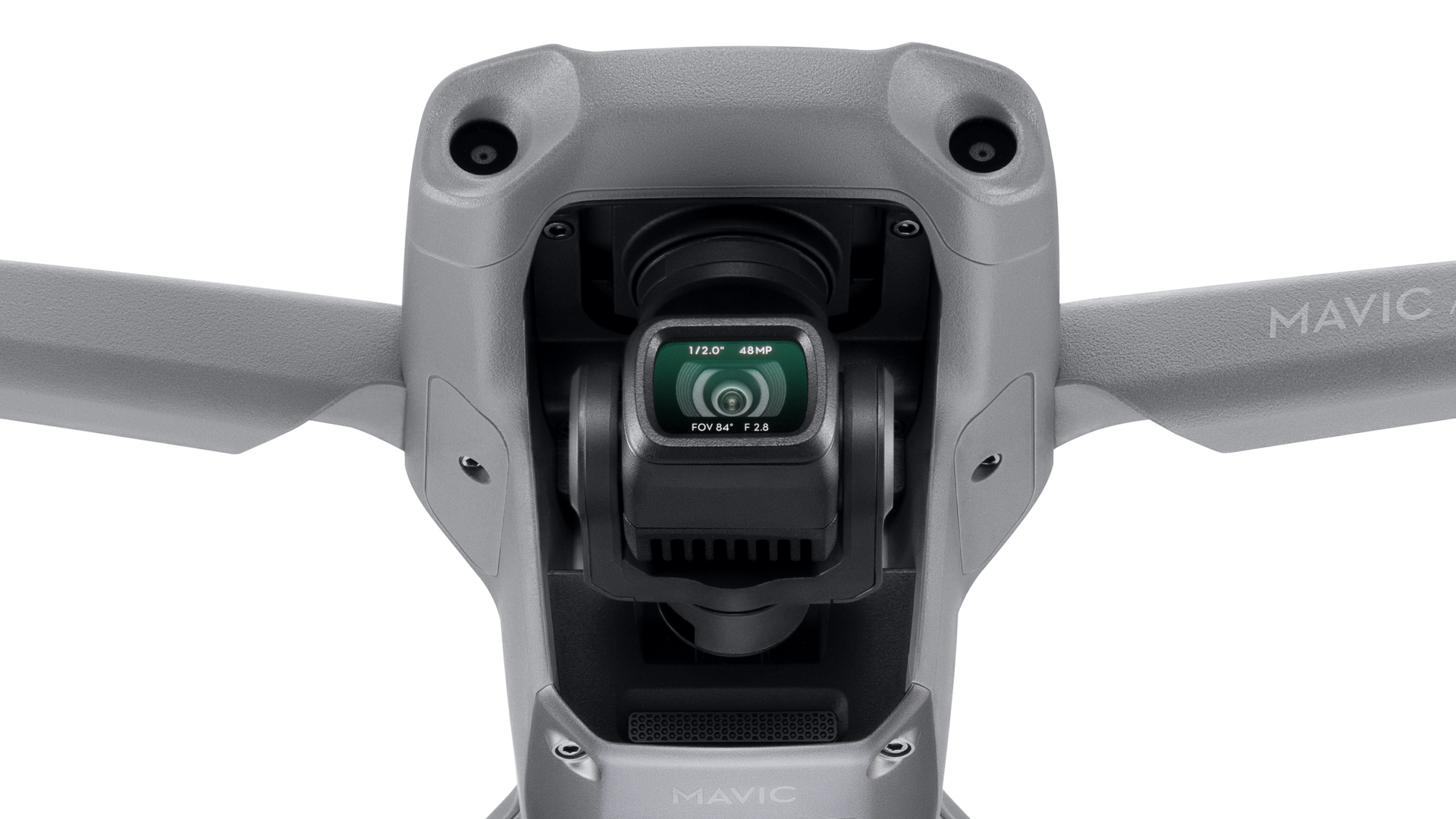
This little camera takes 48MP stills and shoots 4K at 60fps!
DJI Mavic Air 2 review: camera performance
This is where things get really interesting. The current, possibly outgoing, Air’s camera uses a small compact camera-sized 1/2.3” CMOS sensor capable of shooting 4K/30 frames per second at 100 Mbps and 12MP stills. By massive contrast, this one’s new half-inch CMOS sensor will shoot to a frankly incredible 4K/60fps at 120 Mbps. That’s a better spec than the one-inch sensor fitted to the current Mavic 2 Pro.
It excels at shooting stills too – in a BIG way. Yes its basic single and burst photo resolution is the same as the Mavic Air and Mini (12MP) but keep it in single shot mode and you can take advantage of a whopping 48MP to shoot ravishingly sharp and detailed shots like never before. Its ISO range is also impressive – up to 1,600 in auto and 3,200 in manual.
Other brilliant photo and video-related additions include Scene Recognition (five categories from sunsets and blue skies to snow and grass), a Hyperlight function that takes multiple shots and stitches them together to produce noiseless low-light images, and High Dynamic Range (HDR) which merges seven different exposures to create photos with rich detail and contrast.
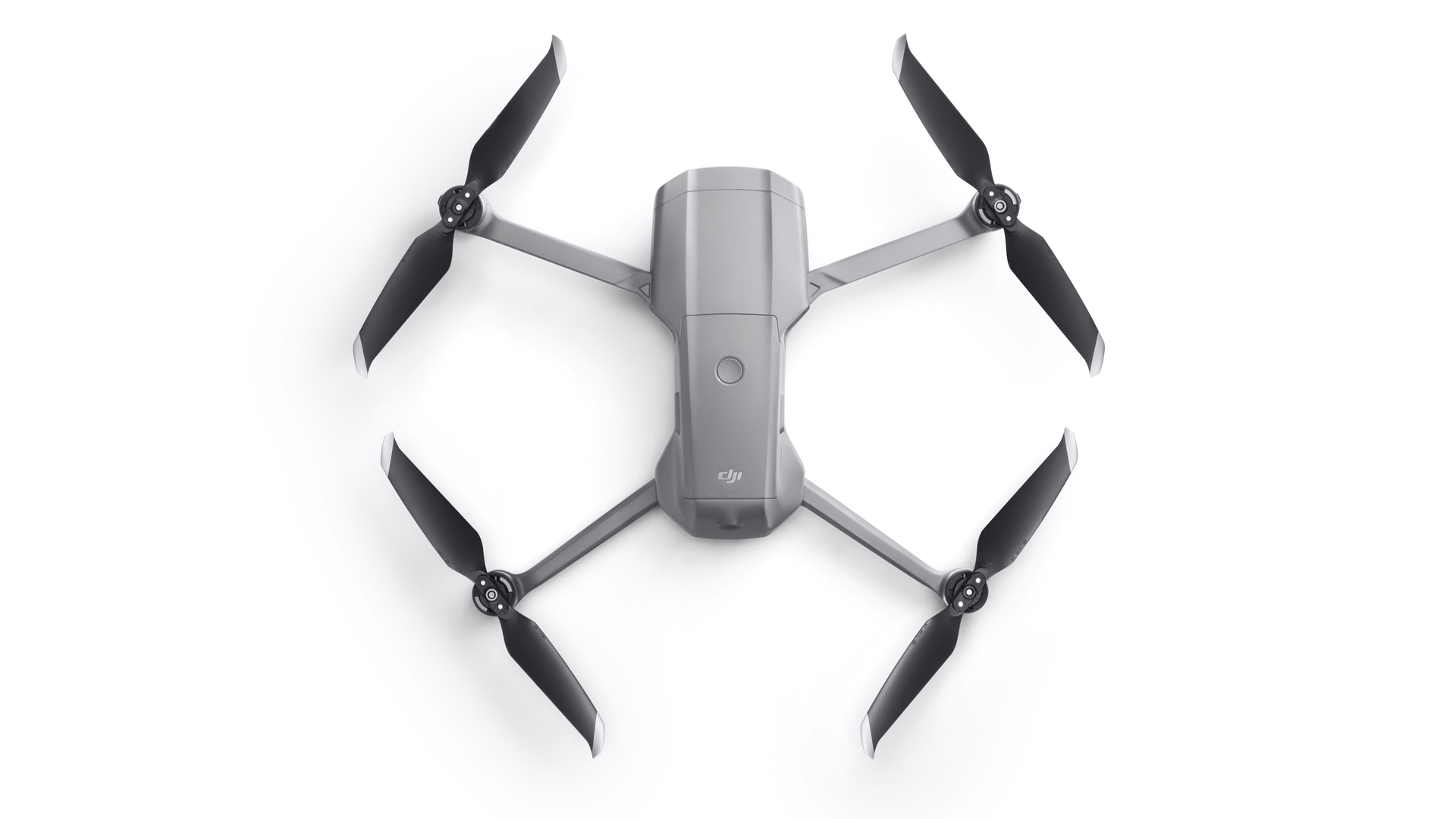
DJI Mavic Air 2 review: in-flight photography and video features
Aside from the now obligatory automotive Quick Shots (dronie, rocket, circle, boomerang, asteroid, etc), the Mavic Air 2 also comes with three FocusTrack functions to make professional-style aerial cinematography easily accessible to everyone. Chief among these is the new Spotlight 2.0, as fitted to DJI’s pro-spec Inspire series. Spotlight allows you to fix the camera on a subject (simply draw a rectangle around it) while the pilot concentrates on controlling the drone. This is a brilliant option that helps give video a really smooth, professional look. FocusTrack also includes ActiveTrack (a sort of follow-me feature) and Point of Interest (the drone sets a flight path around subjects, both static and moving).
All of these features are accessible via the newly revamped DJI Fly app, available for both Android (6.0 or above) and iOS (10.0 or above).
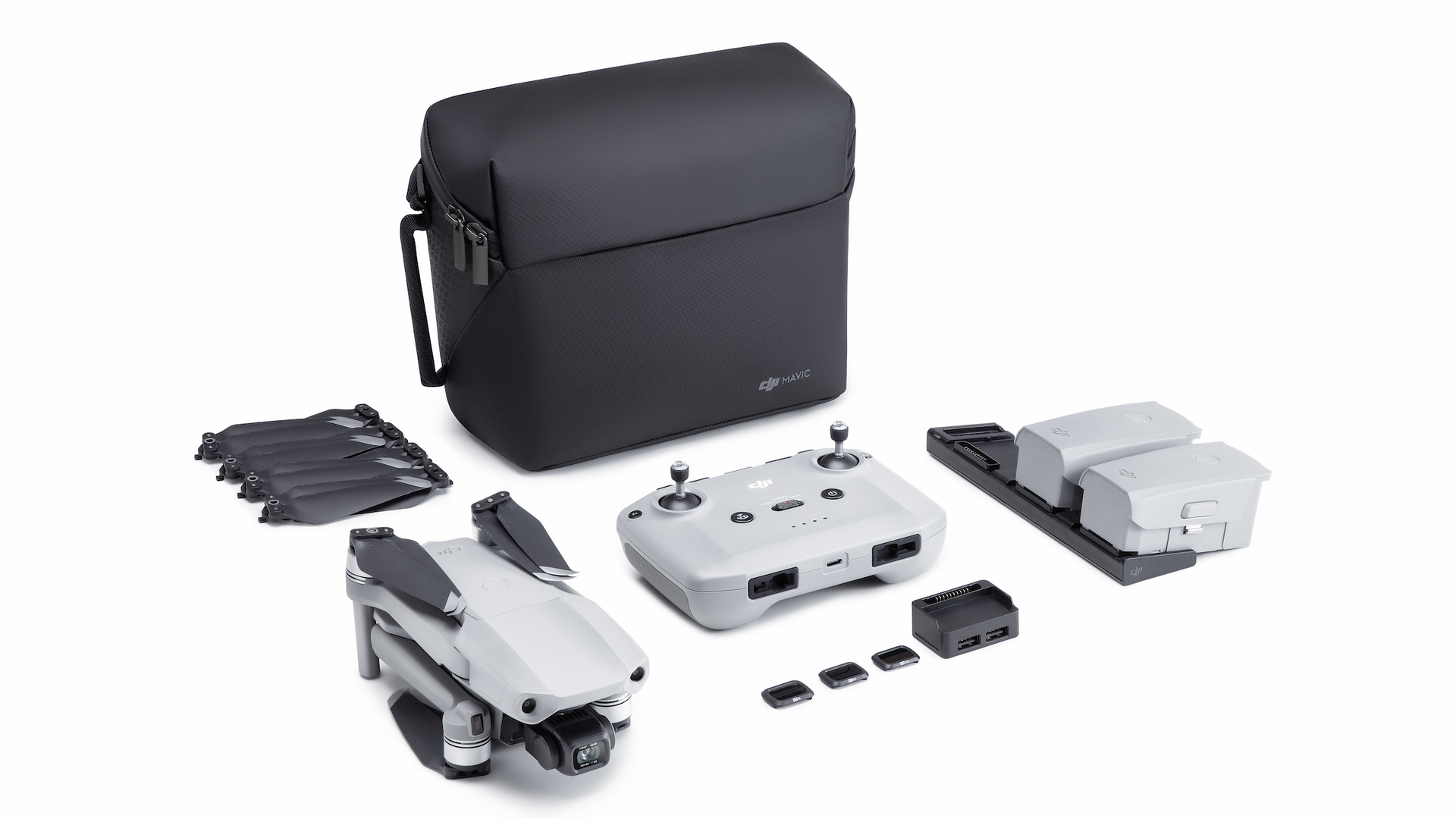
The Mavic Air 2 is available in two bundles. Go for the Fly More Combo if you plan to fly a lot
DJI Mavic Air 2 review: What’s in the box?
The Mavic Air is available in two packages: Basic and Fly More. Along with the drone and controller, the Basic kit (£769) includes one battery, a charger and all wires and cables. The Fly More combo (£949) is worth it if you take drone flying seriously and do it often. Along with the drone and controller, it includes two batteries, a multiple charging hub, ND filters and a carry case.
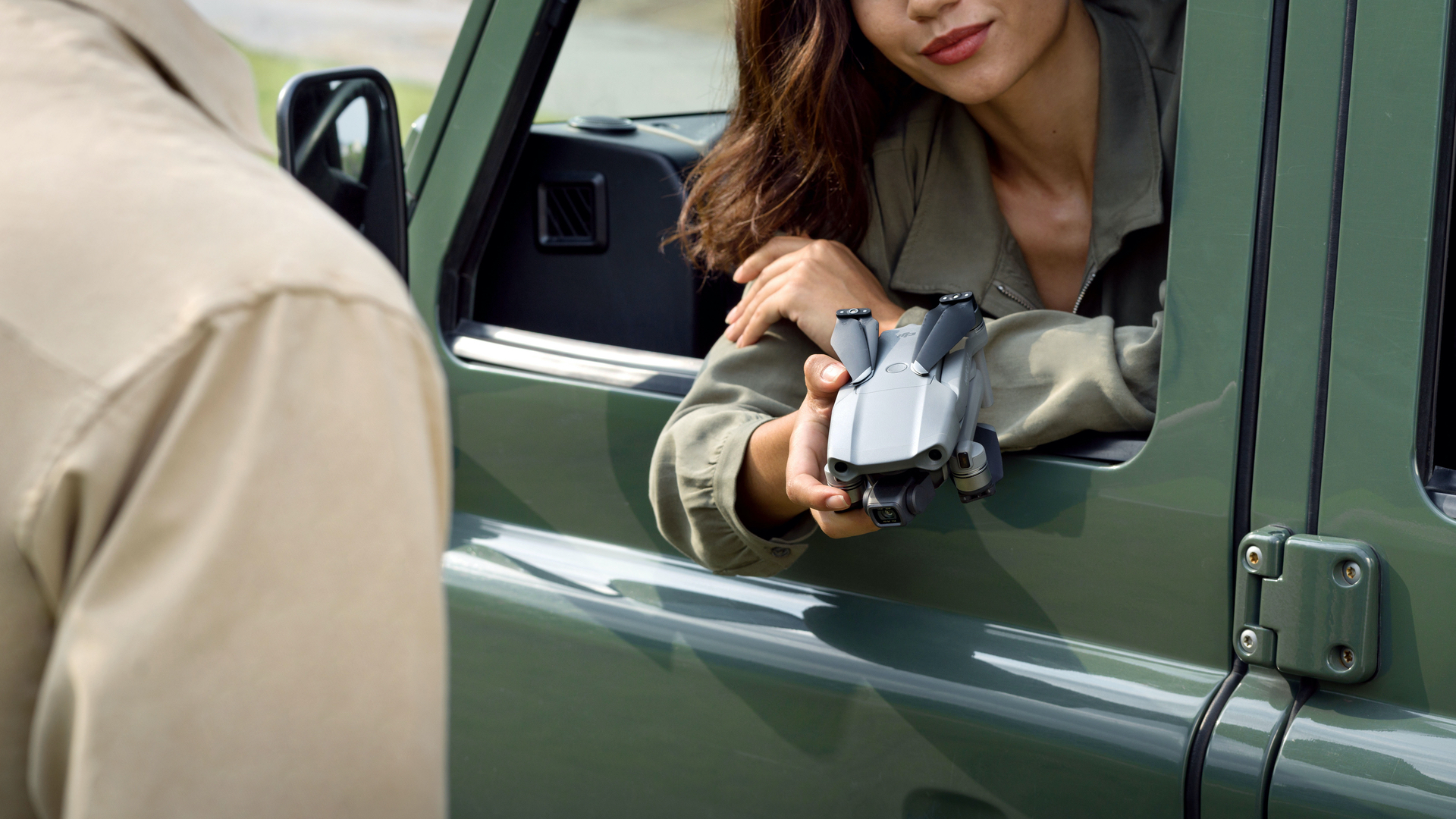
This drone landed in my garden. Is it yours?
DJI Mavic Air 2 review: verdict
Despite initially being a little disappointed that DJI has dropped the smooth lines of the highly portable Mavic Air for a larger, more angular Mavic 2-style body that isn’t quite as small and portable, it’s still an incredible feat of engineering that never ceases to amaze. It’s just so rock steady in flight and such a joy to use. Put another way, the Mavic Air 2 takes landscape images every bit as lush as my trusty Sony RX10 bridge camera, but for half the price. And with a shedload more tech on board. Oh, and it bloody well flies, too!
For most people thinking of joining the drone throng, my first choice would still be the little DJI Mavic Mini which is cheap, flies well, shoots excellent footage and doesn’t require a mandatory registration certificate. But if you want to up your game and take some of the best photos and footage you’ve ever seen come out of a drone, then this is the model to buy. Despite the slightly smaller sensor, in many instances it outperforms the current Mavic 2 Pro and yet it costs half the price. That’s a bargain IMO.
Sign up to the T3 newsletter for smarter living straight to your inbox
Get all the latest news, reviews, deals and buying guides on gorgeous tech, home and active products from the T3 experts
Derek (aka Delbert, Delvis, Delphinium, Delboy etc) specialises in home and outdoor wares, from coffee machines, white appliances and vacs to drones, garden gear and BBQs. He has been writing for more years than anyone can remember, starting at the legendary Time Out magazine – the original, London version – on a typewriter! He now writes for T3 between playing drums with his bandmates in Red Box (redboxmusic).
-
 Warning: Ciele’s refreshed Elite Collection may cause excessive garment envy on race day
Warning: Ciele’s refreshed Elite Collection may cause excessive garment envy on race dayFlex on your run crew with Ciele’s latest drop
By Matt Kollat Published
-
 Smeg adds a touch of navy sophistication to its iconic breakfast set
Smeg adds a touch of navy sophistication to its iconic breakfast setIt's a minimalist's dream
By Lizzie Wilmot Published
-
 My most anticipated Netflix movie of the year gets a wild new trailer
My most anticipated Netflix movie of the year gets a wild new trailerHavoc looks pretty unbelievable
By Max Freeman-Mills Published